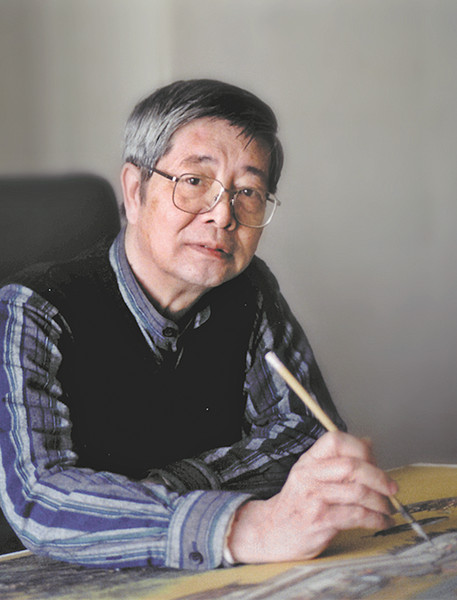 |
|
Artist Zhang Xiaoyou [Photo provided to China Daily] |
The work also has a linear perspective-common in Western painting-which makes it even more vivid.
The work has a poetic, earthy quality and a quiet elegant tone to it, reminding one of the classic Along the River During the Qingming Festival by 11th-century painter Zhang Zeduan.
Zhang's skills come from both traditional Chinese and Western art, which he learned at Beijing's Central Academy of Fine Arts from 1954-59.
Zhang, who was one of only 16 students who enrolled at the academy when he was chosen, then studied under the guidance of modern masters of both ink art and oil painting, such as Wu Zuoren, Li Keran and Dong Xiwen.
Zhang's classmates then included Yuan Yunsheng and Zhu Naizheng, who later become established oil painters.
"We were to be educated to be 'experts at fine art', said the student recruitment notice," Zhang recalls.
After graduation, he taught sketching at the college until he retired in 1995. He also coproduced huge "red classic" canvases commissioned by the Revolutionary History Museum, now the National Museum of China, during his years at the academy.
His interest in jiehua was ignited during a trip to Thailand in the late 1980s.
There, he found a brochure on this form of Chinese painting.
Speaking about how he became interested in the genre, he says: "We had learned the basics of Chinese painting at the preparatory courses in the first year at the CAFA. Then, I specialized in oil painting. But it didn't occur to me until reading that small booklet that jiehua had existed as an independent genre."
After returning home, he began searching for materials on the genre but found it was dying as very few painters were practicing it.
Speaking about what he saw, he says: "No one took it seriously. And it took days and weeks to complete a painting because of the detailed work needed."
Zhang then decided to use his decades of experience as an oil painter and his knowledge of Chinese painting techniques to revive jiehua.
He also began studying ancient Chinese architecture to make his works more realistic.
Now, he also seeks inspiration from the Dunhuang murals, which he copied during his frequent visits to Gansu province in the early 1980s.
Zhang's jiehua paintings are now with museums and private collectors at home and abroad.
He currently paints about eight hours a day. He is looking to pass on the baton to younger painters.
|
|
|
|
|
|
|
|
